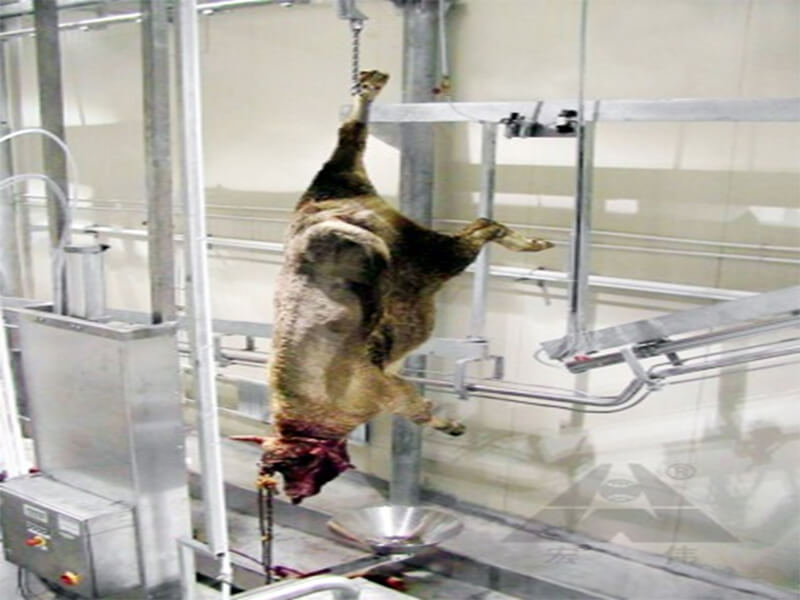
Modern cow abattoirs rely on advanced technology and efficient equipment to ensure safe and humane cow slaughtering processes. From stunning to carcass processing, the slaughter line is designed to optimize productivity, maintain food safety, and comply with industry regulations. In this article, we will explore the main slaughtering equipment used in a modern cow abattoir slaughter line, highlighting their functions and contributions to the overall efficiency of the process.
1. Stunning Equipment
Stunning is the crucial initial step in the slaughtering process, rendering the cow unconscious and insensible to pain before the actual slaughter begins. Several types of stunning equipment are commonly used in modern cow abattoirs:
a. Captive Bolt Gun: This device fires a retractable bolt into the cow’s head, causing immediate loss of consciousness. Captive bolt guns are widely used due to their effectiveness and minimal stress on the animal.
b. Electric Stunners: These devices administer an electric shock to induce unconsciousness. They are suitable for both small and large-scale slaughterhouses and are particularly effective for cattle.
c. Cow Killing Box: There are 3 types of cattle killing boxes, including regular slaughter box, pneumatic slaughter box and rotary slaughter box.





2. Bleeding Equipment
After stunning, the cow is exsanguinated to ensure a proper bleed-out. The main equipment used for bleeding includes:
a. Bleeding Rails: These are suspended, sloping rails on which the stunned and shackled cow is placed. The angle facilitates blood drainage into a collection system.
b. Bleeding Trough: Positioned beneath the bleeding rails, the trough collects the blood for proper disposal.





3. Carcass Processing Equipment
Once the bleeding process is complete, the carcass moves on to the processing phase. Modern cow abattoirs employ various equipment for carcass handling and processing:
a. Carcass Conveyors: These automated systems transport the carcasses through different processing stages, maintaining an orderly and efficient flow.
b. Dressing and Skinning Machines: These machines remove the hide and outer layers from the carcass, preparing it for further processing.
c. Evisceration Equipment: This equipment aids in the removal of internal organs, such as the heart, lungs, liver, and intestines.
d. Carcass Splitting Saw: Used to split the carcass into halves, enabling easier handling and processing.
e. Primal Cutting Equipment: These machines cut the carcass into primal cuts, such as ribs, loins, and chuck.





4. Cleaning and Sanitation Equipment
Maintaining a high level of cleanliness and sanitation is vital in a cow abattoir. Specific cleaning equipment includes:
a. High-Pressure Water Hoses: Used to wash and sanitize equipment, floors, and walls.
b. Foamers and Disinfectant Systems: These systems apply cleaning solutions and disinfectants to thoroughly clean the facility.
c. Offal Collection Bins: Proper disposal of waste material is essential for maintaining hygiene and preventing contamination.





Conclusion
The main slaughtering equipment in modern cow abattoir slaughter lines represents the culmination of decades of technological advancements and a commitment to animal welfare, food safety, and operational efficiency. From stunning the animal to processing the carcass, each piece of equipment plays a crucial role in ensuring a seamless and compliant slaughtering process. By investing in top-quality equipment and adhering to industry best practices, modern cow abattoirs can meet consumer demands for safe and sustainable meat products while upholding ethical standards in animal handling and processing.
